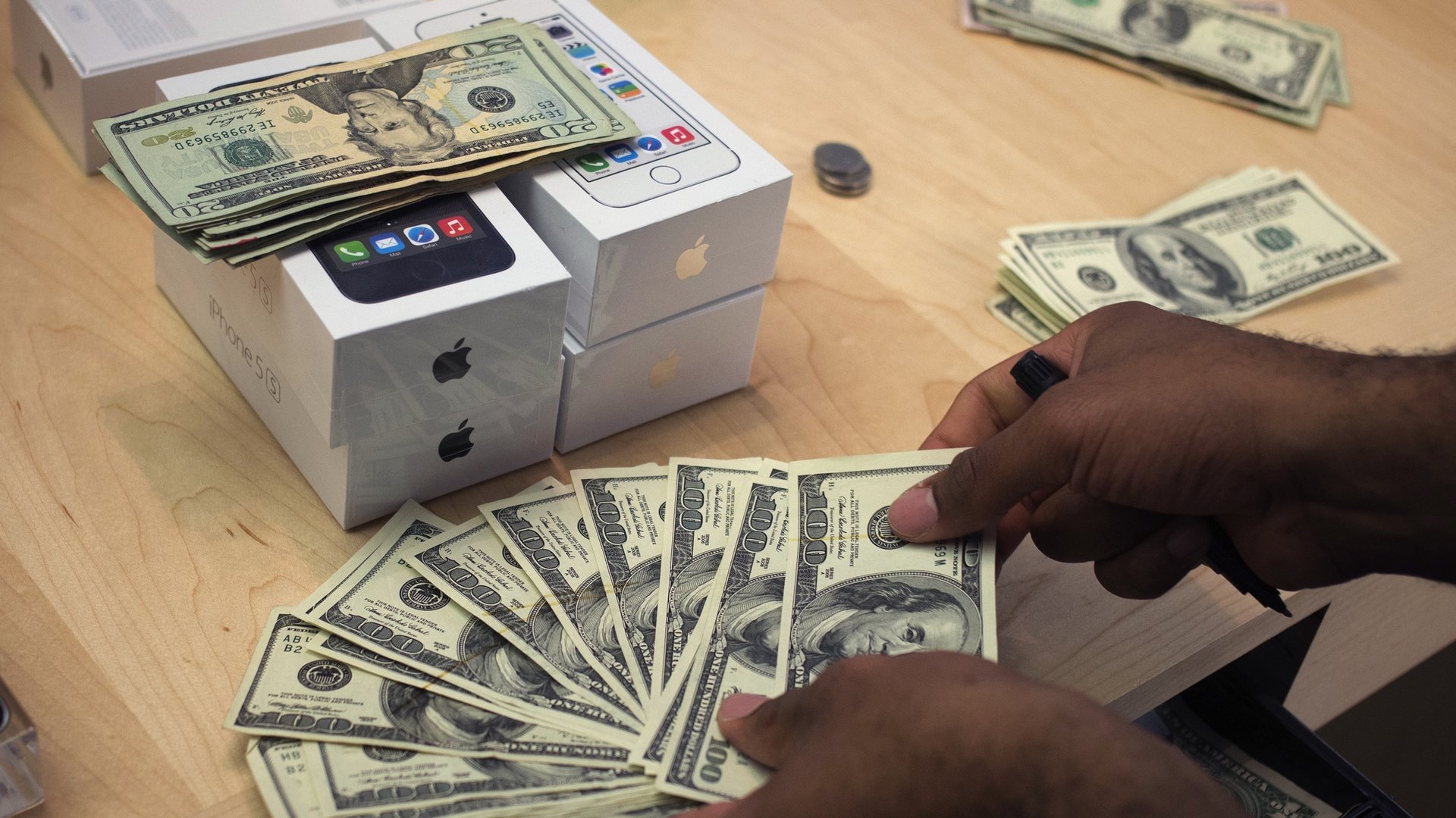How Apple thinks about payment systems
This week’s product launch should break the mold of Apple’s recent Fall announcements: More products than usual and a challenge to the status quo—in payment systems this time.


This week’s product launch should break the mold of Apple’s recent Fall announcements: More products than usual and a challenge to the status quo—in payment systems this time.
A larger iPhone; a line of wearables (unveiled if not yet ready-to-ship); significant iOS improvements (a true “iOS 2.0”); HomeKit and HealthKit devices, applications, and partnerships; payment systems… If only half of the rumors about Apple’s September 9th media event are true, we’re going to have a wider and deeper flood of new products than we’ve seen in Apple’s previous Fall launches.
And let’s not forget the big white cocoon that covers the two-story structure that Apple built for the occasion. Apple is likely to add some drama to the event by lifting the veil at the last moment.
For today, we’ll focus on the recent flurry of leaks and rumors surrounding payment systems. We’ve heard about agreements with American Express, Visa, MasterCard, Bank of America; with retailers such as Nordstrom and Macy’s, CVS and Walgreens; and hoteliers such as Starwood… The predications may not prove accurate down to the last detail, but the outbreak is too strong not to be taken seriously. Apple is about to get into the payment system business in a serious way.
There have been rumors before. Search for “apple payment system” and you’ll get about 80 million hits on Google (11 million on Bing). Flipping through the pages, we see that the excitement started as far back as five years ago when Apple’s “Grab & Go” patent filings disclosed the company’s interest in near field communication, a wireless data transfer method that can be used for quick purchases and payments. This led to the birth of a new i-Word around 2010: the iWallet.
From its very beginning, the iPhone has looked like a logical payment device. Our phones are always with us; they’re more secure than the magnetic stripe on a credit card because they can use “payment tokens”—codes that authenticate you without identifying your credit card account; payment apps can be easily downloaded and updated.
The possibilities looked endless and, of course, led to overheated predictions: Think of all the trillions of dollars sloshing around in debit/credit cards. If Apple captured only a small fraction of the flow, they’d be filthy rich!
Others disagreed. In January 2011, PCWorld’s Tom Spring explained why Apple’s Mobile Payment System Will Fail. Among his objections, was the implicit assumption that phones are somehow easier than cards (“What’s gained…by waving an iPhone instead of swiping a bank card is not clear to me”), and that retailers won’t accept phones as payment instruments until the “Another Box at the Register” obstacle is surmounted:
“Near field communication is a technology that requires a physical box/reader on the retailer’s end. Until we know more about what incentives there are for retailers to invest in this technology I think it’s going to be hard sell for Apple to convince millions of merchants to put another box at the point of sale…”
Indeed, attempting to modify ingrained customer behavior isn’t a well-trodden path to riches, nor is asking retailers to install a new box next to their cash register. This is why many payment system innovations, Google Wallet is a recent example, have failed to amass enough gravitational pull to gain currency (pardon the pun.) There just hasn’t been enough acceptance by consumers and retailers for “fast lane” payment devices to become as matter-of-fact as the incumbents.
Still… Apple has repeatedly shown great patience and willingness to challenge settled wisdom.
The company’s embrace of payment systems started in 2003 when its newly-opened iTunes Store offered two innovations: Single tracks were sold for 99 cents apiece (at the time), and we could settle the purchase with a credit card. Critics scoffed: The price is too low! The credit card companies’ fixed+percentage transaction fees will be a profit-killer!
How can Apple possibly make money with such a proposition?
This was myopia. The iTunes Store wasn’t intended to be a money maker. Its only purpose was to sell more iPods at higher margins, that’s where the money was—and still is. In retrospect, Jobs was pouring the foundations of the Apple ecosystem business model: Hardware is the star; everything else supports the big shots’ volumes and margins.
Returning to today’s (or this coming Tuesday’s) topic, Apple doesn’t want to displace the key players—the banks and credit card companies—any more now than it did a decade ago. Credit card companies, for example, play a hard-to-replace role in policing transactions. It’s not always pretty or convenient when one has to call a US number from Europe because the system “tripped” over an unusual transaction, but it works.
One can’t imagine Apple even thinking of storing and lending money, of trying to “capture a fraction of the flow.” If the company does introduce a near field payment system, it won’t be as an attempt to make money in itself, it will simply be another extension of the Apple ecosystem, another way to make iDevices more attractive.
Beyond this neat playbook theory lurks the matter of modifying consumer behavior and retail infrastructure; Tom Spring’s objections are just as cogent today as they were in 2009. And perhaps Apple’s answer—its rebuttal to the conventional reluctance—is hiding in the still-cocooned show-and-tell building.
PS: On today’s topic, see Horace Dediu’s views on the value of payment systems as bit pipes.
PPS: Unrelated but hard to resist: People from the fashion industry now working at Apple. And their friends, fashion editors, unusual invitees to a Cupertino product launch.
You can read more of Monday Note’s coverage of technology and media here.